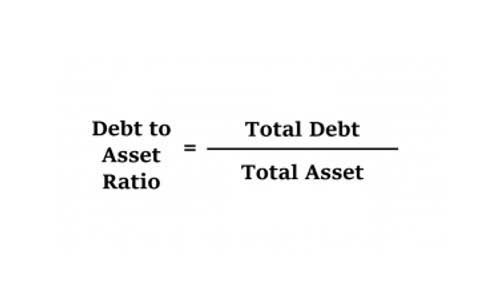
On the top, the name of the ledger is mentioned, the left side is for debit entries, and the right side is for credit t accounts entries within the ledger. It is essentially a visual or graphical representation of the company’s accounts which can be used to present, scrutinize, or review. A double entry system is a detailed bookkeeping process where every entry has an additional corresponding entry to a different account. Consider the word “double” in “double entry” standing for “debit” and “credit”. The two totals for each must balance, otherwise there is an error in the recording.
T-Accounts with Single Entries

A T Account is the visual structure used in double entry bookkeeping to keep debits and credits separated. For example, on a T-chart, debits are listed to the https://www.bookstime.com/ left of the vertical line while credits are listed on the right side of the vertical line making the company’s general ledger easier to read. T-accounts can also be used to record changes to the income statement, where accounts can be set up for revenues (profits) and expenses (losses) of a firm.
A Small Business Guide to T-Accounts
Remember, we can easily cross-reference between two accounts because of the contra account being used as the description of the transaction. A current asset whose ending balance should report the cost of a merchandiser’s products awaiting to be sold. The inventory of a manufacturer should report the cost of its raw materials, work-in-process, and finished goods. The cost of inventory should include all costs necessary to acquire the items and to get bookkeeping them ready for sale.
- Likewise, accounts with a credit balance, like liabilities, will always increase when another credit is added to the account.
- Be sure to test yourself on this lesson and how to balance a T-account by trying the Balancing a T-Account Practice Question further below.
- The last element of the T-account that we need to cover is its balance.
- Every financial transaction is first recorded as a journal entry, into the general journal.
- Let us understand the concept in depth through understanding the related terminologies of a T account balance through the discussion below.
Accounting Basics: T Accounts

Because T accounts are posted into the General Ledger of a business, they’re also commonly recognized as ledger accounts. Below are the remainder of the journal entries relating to bank that we will enter in our bank T-account. Remember that with every transaction and journal entry there will be two accounts that are affected. We do not make any further entries to work out the closing balance – the $4,000 balance is self-evident from the single entry.
Service Revenue Earned and Collected
If you’ve been studying accounting for even a short amount of time then you’ve probably heard of T-accounts and ledgers. In this lesson we’re going to learn exactly what these are, we’ll look at a detailed example of how to put a T account together, and we’ll learn why they’re so important. The Balance b/f shown above is the actual closing balance of the bank account (a debit balance). Whenever cash is paid out, the Cash account is credited (and another account is debited).


T accounts are used in a bookkeeping method known as double-entry bookkeeping. In this guide, we’ll be going through all the basics of T accounts, their uses in accounting, how to record them, and so much more. Let us understand the concept in depth through understanding the related terminologies of a T account balance through the discussion below. My Accounting Course is a world-class educational resource developed by experts to simplify accounting, finance, & investment analysis topics, so students and professionals can learn and propel their careers. Shaun Conrad is a Certified Public Accountant and CPA exam expert with a passion for teaching. After almost a decade of experience in public accounting, he created MyAccountingCourse.com to help people learn accounting & finance, pass the CPA exam, and start their career.
Service Revenue Earned but Uncollected
- Used more as a support mechanism, accounting T-accounts can be helpful for small business owners and entry-level bookkeepers who are making the move to double-entry accounting.
- In this guide, we’ll be going through all the basics of T accounts, their uses in accounting, how to record them, and so much more.
- When inventory items are acquired or produced at varying costs, the company will need to make an assumption on how to flow the changing costs.
- And if you’re new to the accounting world and have little knowledge in finance, T accounts can be especially useful in working through complex financial transactions.
- The first transaction that involves the bank account occurs on the 1st of April, where Mr. Burnham invested $15,000 in the business.
- Before diving into why T accounts are used in accounting, let’s kick things off with some basic accounting definitions you’ll need to knw to properly understand how T accounts work.
- And right at the bottom of the page, you can find more questions on the topic submitted by fellow students.
This feature allows you to focus on specific dimensions and gain insightful knowledge regarding the financial health of your business. On February 15th, the company XYZ invoices a client for $600 worth of service. The payment terms of the invoice call for payment to be received in the following 20 days. Our mission is to empower readers with the most factual and reliable financial information possible to help them make informed decisions for their individual needs. Our goal is to deliver the most understandable and comprehensive explanations of financial topics using simple writing complemented by helpful graphics and animation videos.
Examples of T-Account
According to the Collins English Dictionary, the ledger is “the principal book in which the commercial transactions of a company are recorded.” Before going any further, take out a piece of paper and try construct the loan T-account using the journal entries above. So, we have our opening balance (debit) of $4,300 and our closing balance (debit) of $19,100.
- Before you can begin to use a T-account, you have to understand some basic accounting terms.
- In double-entry bookkeeping, every transaction affects two accounts at the same time (hence the word double).
- The title of the account is then entered just above the top horizontal line, while underneath debits are listed on the left and credits are recorded on the right, separated by the vertical line of the letter T.
- If that’s not the case, make sure to double-check your books as you’ve probably made an accounting error along the way.
When teaching accounting or bookkeeping

The next transaction relating to the bank account was on the 7th of April. By account, we mean a summary record of all transactions relating to a particular item in a business. Be sure to check your understanding of this lesson by taking the quiz in the Test Yourself! And right at the bottom of the page, you can find more questions on the topic submitted by fellow students. Balance c/f is just an entry used in calculating that the closing balance is $19,100 on the debit side. Be sure to test yourself on this lesson and how to balance a T-account by trying the Balancing a T-Account Practice Question further below.











